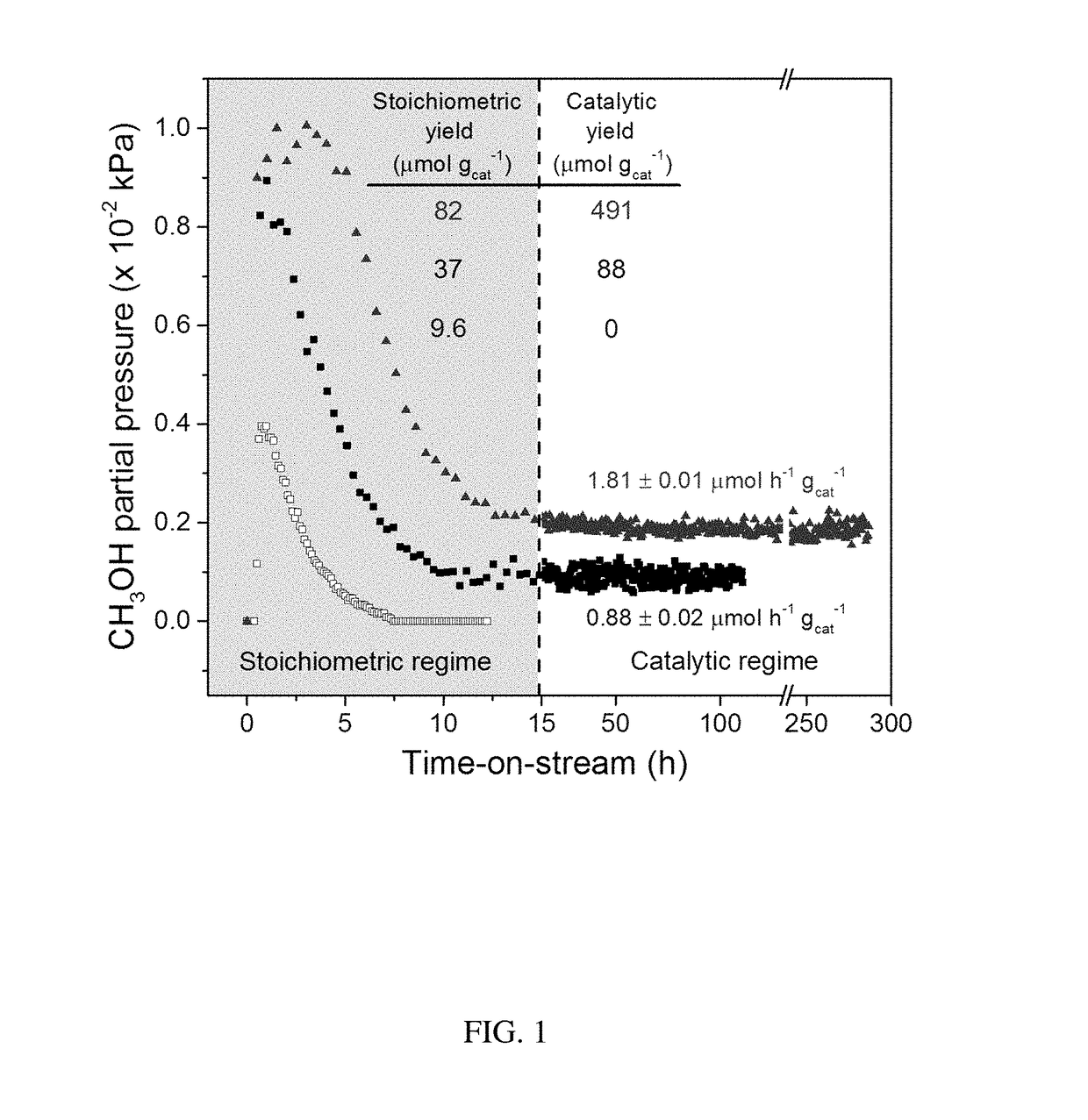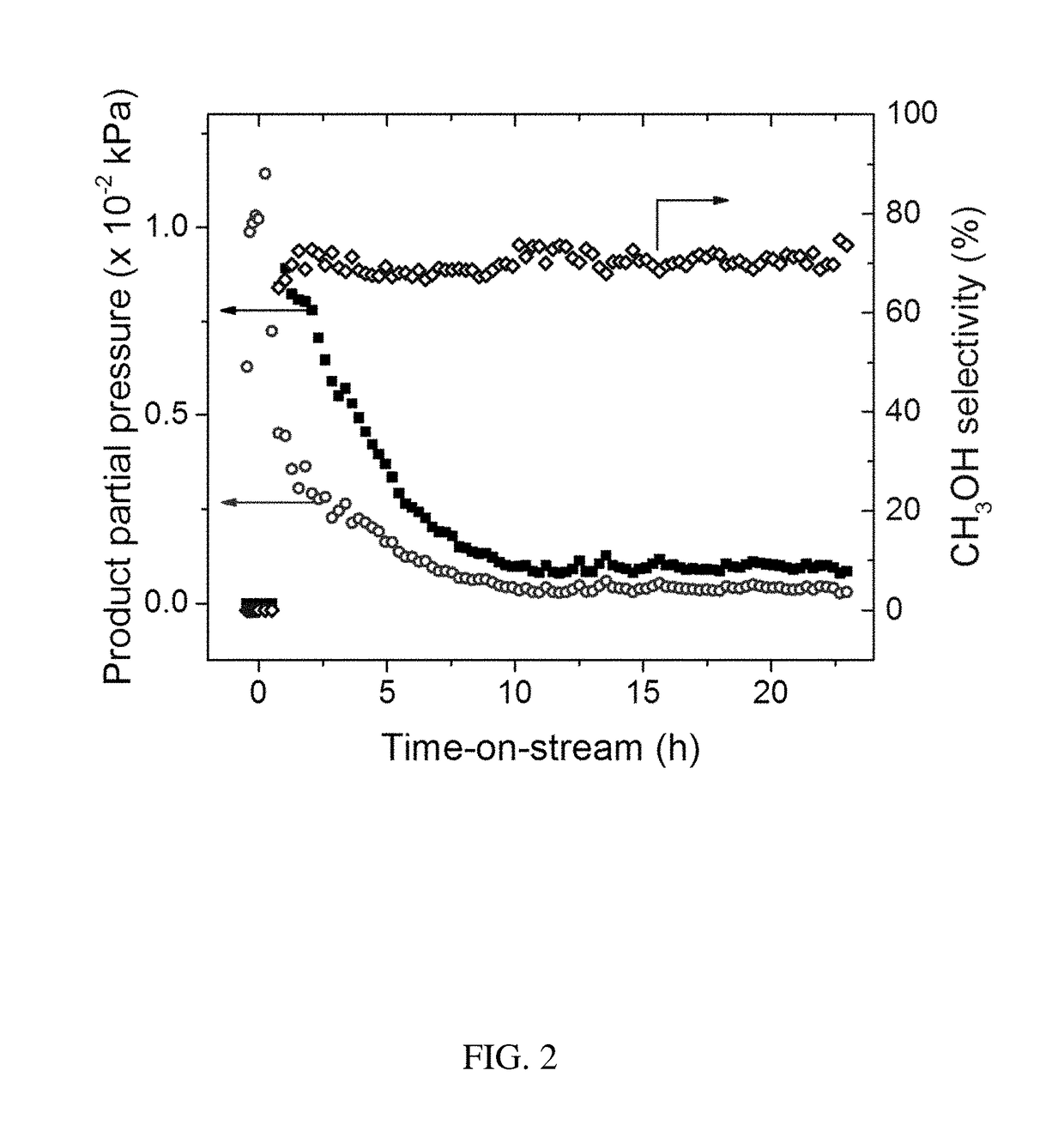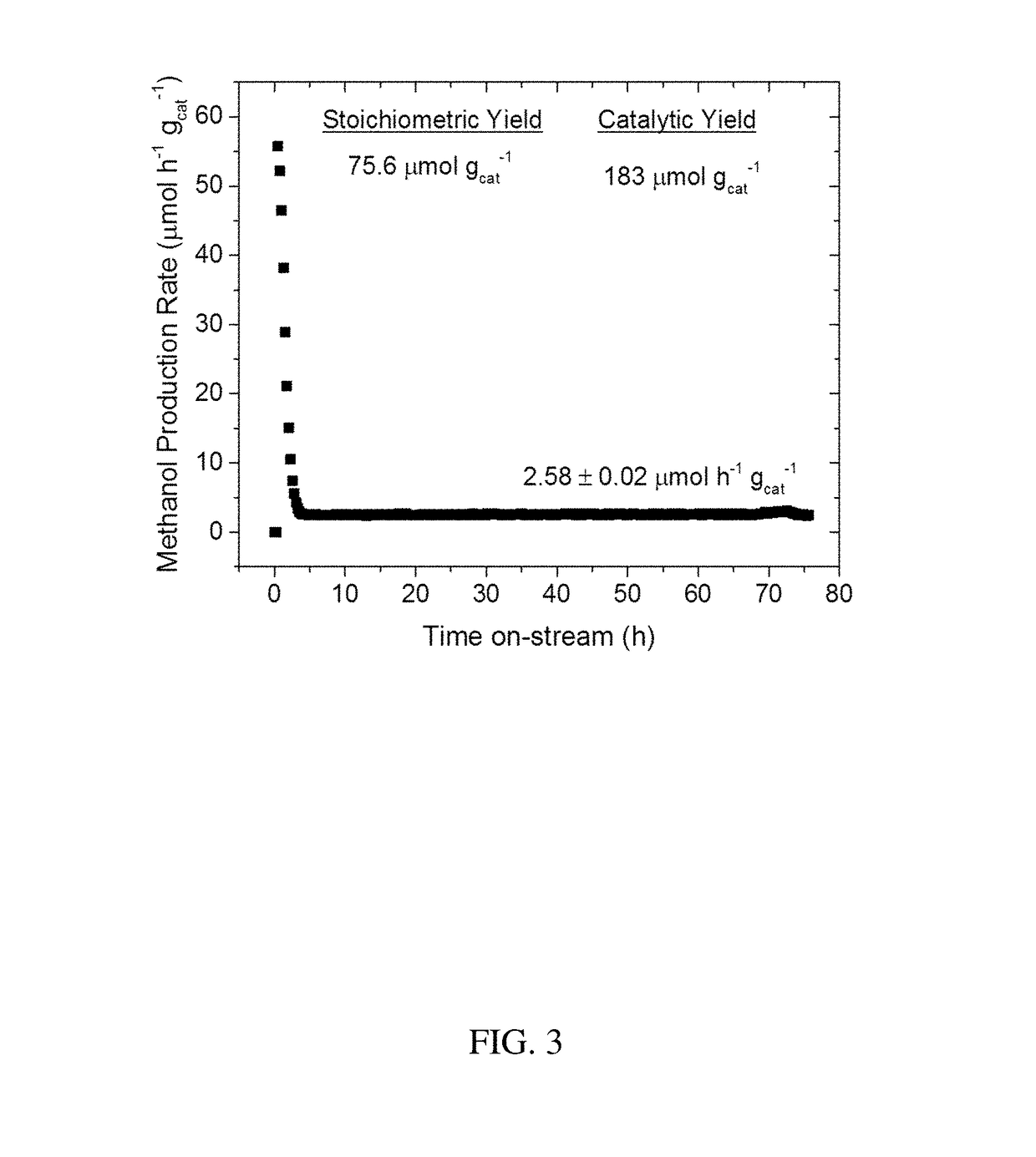Catalytic methods for the production of an alcohol from an alkane
a technology of catalytic methods and alkane, which is applied in the field of catalytic methods for the production of an alkane alcohol, can solve the problems of high capital cost of gas-to-liquid plants, large scale and billions of dollars in capital investment, and high complexity of gtl
- Summary
- Abstract
- Description
- Claims
- Application Information
AI Technical Summary
Benefits of technology
Problems solved by technology
Method used
Image
Examples
examples
First Non-Limiting Example
[0062]The discovery of large shale gas reservoirs and advances in extraction techniques has motivated methane to be used as a transportation fuel. A common strategy to convert methane into higher valued fuels is the gas-to-liquids (GTL) process of steam reforming methane into syngas (CO and H2) and subsequent reaction into methanol, but GTL requires large scales and billions in capital investment. To reduce unit operations, cost, and size of GTL plants, the direct, selective oxidation of methane into methanol has attracted significant interest. Copper exchanged zeolites ZSM-5 and mordenite (MOR) are of particular importance due to similarities in their active sites to methane monooxygenase enzymes. These zeolites oxidize methane at low temperatures (>423 K) using molecular oxygen. Yet, methane is strongly bound to the copper active site or Bronsted acid sites as surface methoxy species, requiring water to extract methanol while simultaneously deactivating t...
PUM
| Property | Measurement | Unit |
|---|---|---|
| temperature | aaaaa | aaaaa |
| temperature | aaaaa | aaaaa |
| temperature | aaaaa | aaaaa |
Abstract
Description
Claims
Application Information
 Login to View More
Login to View More - R&D
- Intellectual Property
- Life Sciences
- Materials
- Tech Scout
- Unparalleled Data Quality
- Higher Quality Content
- 60% Fewer Hallucinations
Browse by: Latest US Patents, China's latest patents, Technical Efficacy Thesaurus, Application Domain, Technology Topic, Popular Technical Reports.
© 2025 PatSnap. All rights reserved.Legal|Privacy policy|Modern Slavery Act Transparency Statement|Sitemap|About US| Contact US: help@patsnap.com



